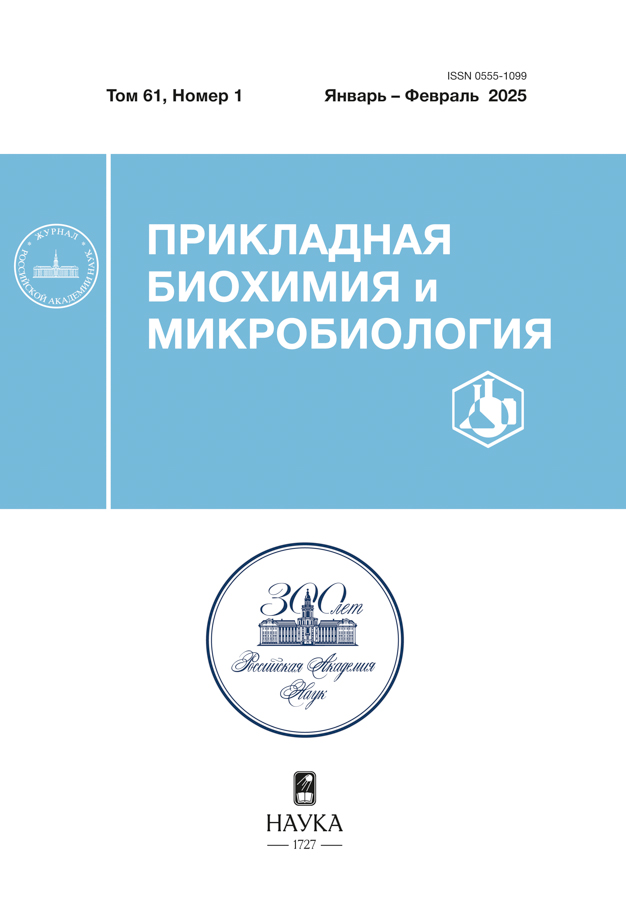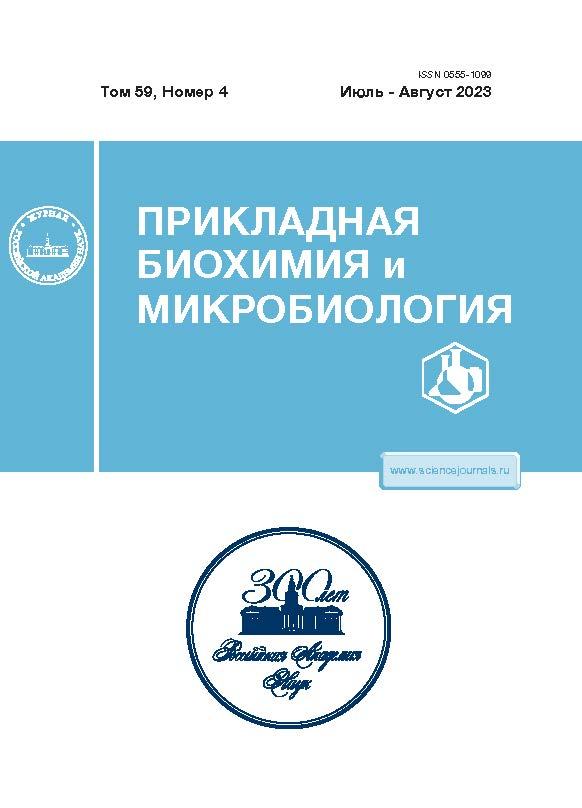The Efficiency of Various DNA Polymerases for Amplification of Long Sequences from Genomic DNA and cDNA of Cultivated Potato
- Authors: Antipov A.D.1, Zlobin N.E.1
-
Affiliations:
- All-Russia Research Institute of Agricultural Biotechnology
- Issue: Vol 59, No 4 (2023)
- Pages: 392-400
- Section: Articles
- URL: https://permmedjournal.ru/0555-1099/article/view/674612
- DOI: https://doi.org/10.31857/S0555109923040025
- EDN: https://elibrary.ru/QYRYJY
- ID: 674612
Cite item
Abstract
Amplification of long fragments from complex templates, such as eukaryotic genomic DNA, is considered a difficult task for most DNA polymerases. In this research, 6 variants of DNA polymerases were used to amplify full-length sequences from the genomic DNA of Solanum tuberosum genes encoding translation initiation factors of the eIF4E family, as well as for the synthesis of fragments of the potato Y virus genome from cDNA of potato plants infected by this virus. It was found that the efficiency of amplification by various DNA polymerases generally decreased with increasing length of the amplicons. LongAmp and Platinum SuperFi II polymerases demonstrated the highest efficiency in the synthesis of long fragments, which made it possible to synthesize PCR products with a length of more than 10,000 base pairs with high efficiency. The lowest efficiency was demonstrated by Encyclo polymerase. None of the DNA polymerases provided efficient amplification of all the studied DNA fragments. At the same time, any of the studied DNA fragments could be effectively amplified using at least one DNA polymerase variant. Thus, the choice of DNA polymerase was of key importance for the efficiency of the synthesis of a desired PCR product.
About the authors
A. D. Antipov
All-Russia Research Institute of Agricultural Biotechnology
Email: stresslab@yandex.ru
Russia, 127550, Moscow, Timiryazevskaya, 42
N. E. Zlobin
All-Russia Research Institute of Agricultural Biotechnology
Author for correspondence.
Email: stresslab@yandex.ru
Russia, 127550, Moscow, Timiryazevskaya, 42
References
- Karunanathie H., Kee P.S., Ng S.F., Kennedy M.A., Chua E.W. // Biochimie. 2022. V. 197. P. 130–143. https://doi.org/10.1016/j.biochi.2022.02.009
- Knierim E., Lucke B., Schwarz J.M., Schuelke M., Seelow D. // PloS One. 2011. V. 6. № 11. P. e28240. https://doi.org/10.1371/journal.pone.0028240
- Qiao W., Yang Y., Sebra R., Mendiratta G., Gaedigk A., Desnick R.J., Scott S.A. // Hum. Mutat. 2016. V. 37. № 3. P. 315–323. https://doi.org/10.1002/humu.22936
- Martijn J., Lind A.E., Schön M.E., Spiertz I., Juzokaite L., Bunikis I. et al. // Environ. Microbiol. 2019. V. 21. № 7. P. 2485–2498. https://doi.org/10.1111/1462-2920.14636
- Karst S.M., Ziels R.M., Kirkegaard R.H., Sørensen E.A., McDonald D., Zhu Q., Knight R., Albertsen, M. // Nat. Methods. 2021. V. 18. № 2. P. 165–169. https://doi.org/10.1038/s41592-020-01041-y
- Brait N., Külekçi B., Goerzer I. // BMC Genomics. 2022. V. 23. № 1. P. 1–16. https://doi.org/10.1186/s12864-021-08272-z
- Briscoe A.G., Goodacre S., Masta S.E., Taylor M.I., Arnedo M.A., Penney D., Kenny J., Creer S. // PLoS One. 2013. V. 8. № 5. P. e62404. https://doi.org/10.1371/journal.pone.0062404
- Jia H., Guo Y., Zhao W., Wang K. // Sci. Rep. 2014. V. 4. № 1. P. 1–8. https://doi.org/10.1038/srep05737
- Ozaki Y., Suzuki S., Shigenari A., Okudaira Y., Kikkawa E., Oka A. et al. // Tissue Antigens. 2014. V. 83. № 1. P. 10–16. https://doi.org/10.1111/tan.12258
- Deiner K., Renshaw M.A., Li Y., Olds B.P., Lodge D.M., Pfrender M.E. // Methods Ecol. Evol. 2017. V. 8. № 12. P. 1888–1898. https://doi.org/10.1111/2041-210X.12836
- Togi S., Ura H., Niida Y. Optimization and Validation of Multimodular // J. Mol. Diagn. 2021. V. 23. № 4. P. 424–446. https://doi.org/10.1016/j.jmoldx.2020.12.009
- Günther S., Sommer G., Von Breunig F., Iwanska A., Kalinina T., Sterneck M., Will H. // J. Clin. Microbiol. 1998. V. 36. № 2. P. 531–538. https://doi.org/10.1128/JCM.36.2.531-538.1998
- Trémeaux P., Caporossi A., Ramière C., Santoni E., Tarbouriech N., Thélu M.A. et al. // Clin. Microbiol. Infect. 2016. V. 22. № 5. P. 460-e1. https://doi.org/10.1016/j.cmi.2016.01.015
- Joffret M.L., Polston P.M., Razafindratsimandresy R., Bessaud M., Heraud J.M., Delpeyroux F. // Front. Microbiol. 2018. V. 9. P. 2339. https://doi.org/10.3389/fmicb.2018.02339
- Isaacs S.R., Kim K.W., Cheng J.X., Bull R.A., Stelzer-Braid S., Luciani F. et al. // Sci. Rep. 2018. V. 8. № 1. P. 1–9. https://doi.org/10.1038/s41598-018-30322-y
- Shagin D.A., Lukyanov K.A., Vagner L.L., Matz M.V. // Nucleic Acids Res. 1999. V. 27. № 18. P. e23-i. https://doi.org/10.1093/nar/27.18.e23-i
- Zhao Z., Xie X., Liu W., Huang J., Tan J., Yu H., Zong W. et al. // Mol. Plant. 2022. V. 15. № 4. P. 620–629. https://doi.org/10.1016/j.molp.2021.12.018
- Ignatov K.B., Kramarov V.M. //Biochemistry (Moscow). 2009. V. 74. № 5. P. 557–561. https://doi.org/10.1134/S0006297909050113
- Cheng S., Fockler C., Barnes W.M., Higuchi R. // PNAS. 1994. V. 91. № 12. P. 5695–5699. https://doi.org/10.1073/pnas.91.12.5695
- Waggott W. // Humana Press. 1998. V. 16. P. 81–91. https://doi.org/10.1385/0-89603-499-2:81
- Kasajima I. // Trends Res. 2018. V. 1. P. 1–2. https://doi.org/10.15761/TR.1000115
- Singh R.P., Singh M., King R.R. // J. Virol. Methods. 1998. V. 74. № 2. P. 231–235. https://doi.org/10.1016/S0166-0934(98)00092-5
- Singh R.P., Nie X., Singh M., Coffin R., Duplessis P. // J. Virol. Methods. 2002. V. 99. № 1–2. P. 123–131. https://doi.org/10.1016/S0166-0934(01)00391-3
- Valcarcel J., Reilly K., Gaffney M., O’Brien N.M. // Potato Res. 2015. V. 58. № 3. P. 221–244. https://doi.org/10.1007/s11540-015-9299-z
- Анисимова И.Н., Алпатьева Н.В., Абдуллаев Р.А., Карабицина Ю.И., Кузнецова Е.Б. Скрининг генетических ресурсов растений с использованием ДНК-маркеров: основные принципы, выделение ДНК, постановка ПЦР, электрофорез в агарозном геле. / Ред. Радченко Е.Е.: Методические указания ВИР. СПб: ВИР, 2018. 47 с. https://doi.org/10.30901/978-5-905954-81-8
- Moury B., Charron C., Janzac B., Simon V., Gallois J.L., Palloix A., Caranta C. // Infect. Genet. Evol. 2014. V. 27. P. 472–480. https://doi.org/10.1016/j.meegid.2013.11.024
- Lucioli A., Tavazza R., Baima S., Fatyol K., Burgyan J., Tavazza M. // Front. Microbiol. 2022. V. 13. https://doi.org/10.3389/fmicb.2022.873930
- Quenouille J., Vassilakos N., Moury B. // Plant Pathol. 2013. V. 14. № 5. P. 439–452. https://doi.org/10.1111/mpp.12024
- Suzuki Y., Sugano S. // Genomics Protocols. 2001. V. 175. P. 143–153. https://doi.org/10.1385/1-59259-235-X:143
- Ling A.K., Munro M., Chaudhary N., Li C., Berru M., Wu B., Durocher D., Martin A. // EMBO Rep. 2020. V. 21. № 8. P. e49823. https://doi.org/10.15252/embr.201949823
- Xie X., Muruato A., Lokugamage K.G., Narayanan K., Zhang X., Zou J., Liu J. et al. // Cell Host Microbe. 2020. V. 27. № 5. P. 841–848. https://doi.org/10.1016/j.chom.2020.04.004
- Sannier G., Dube M., Dufour C., Richard C., Brassard N., Delgado G.G., Pagliuzza A., Baxter A.E., Niessl J., Brunet-Ratnasingham E., Charlebois R., Routy B., Routy J.P., Fromentin R., Chomont N., Kaufmann D.E. // Cell Rep. 2021. V. 36. № 9. https://doi.org/10.1016/j.celrep.2021.109643
- Keraite I., Becker P., Canevazzi D., Frias-López C., Dabad M., Tonda-Hernandez R., Paramonov I., Ingham M.J., Brun-Heath I., Leno J., Abulí A., Garcia-Arumí E., Heath S.C., Gut M., Gut I.G. // Nat. Commun. 2022. V. 13. № 1. P. 1–12. https://doi.org/10.1038/s41467-022-33530-3
- Maniego J., Pesko B., Habershon-Butcher J., Hincks P., Taylor P., Tozaki T., Ohnuma A., Stewart G., Proudman C., Ryder E. // Drug Testing and Analysis. 2022. V. 14. № 8. P. 1429–1437. https://doi.org/10.1002/dta.3267
- Tasca F., Brescia M., Wang Q., Liu J., Janssen J.M., Szuhai K., Gonçalves M.A. // Nucleic Acids Res. 2022. V. 50. № 13. P. 7761–7782. https://doi.org/10.1093/nar/gkac567
- Vincendeau E., Wei W., Zhang X., Planchais C., Yu W., Lenden-Hasse H., Cokelaer T., da Fonseca J.P., Mouquet H., Adams D.J., Alt F.W., Jackson S.P., Balmus G., Lescale C., Deriano L. // Nat. Commun. 2022. V. 13. № 1. P. 1–16. https://doi.org/10.1038/s41467-022-31287-3












